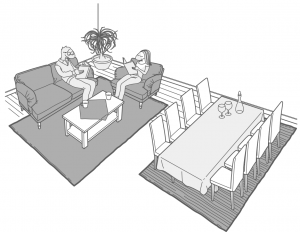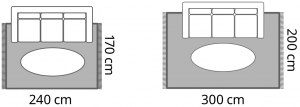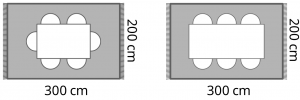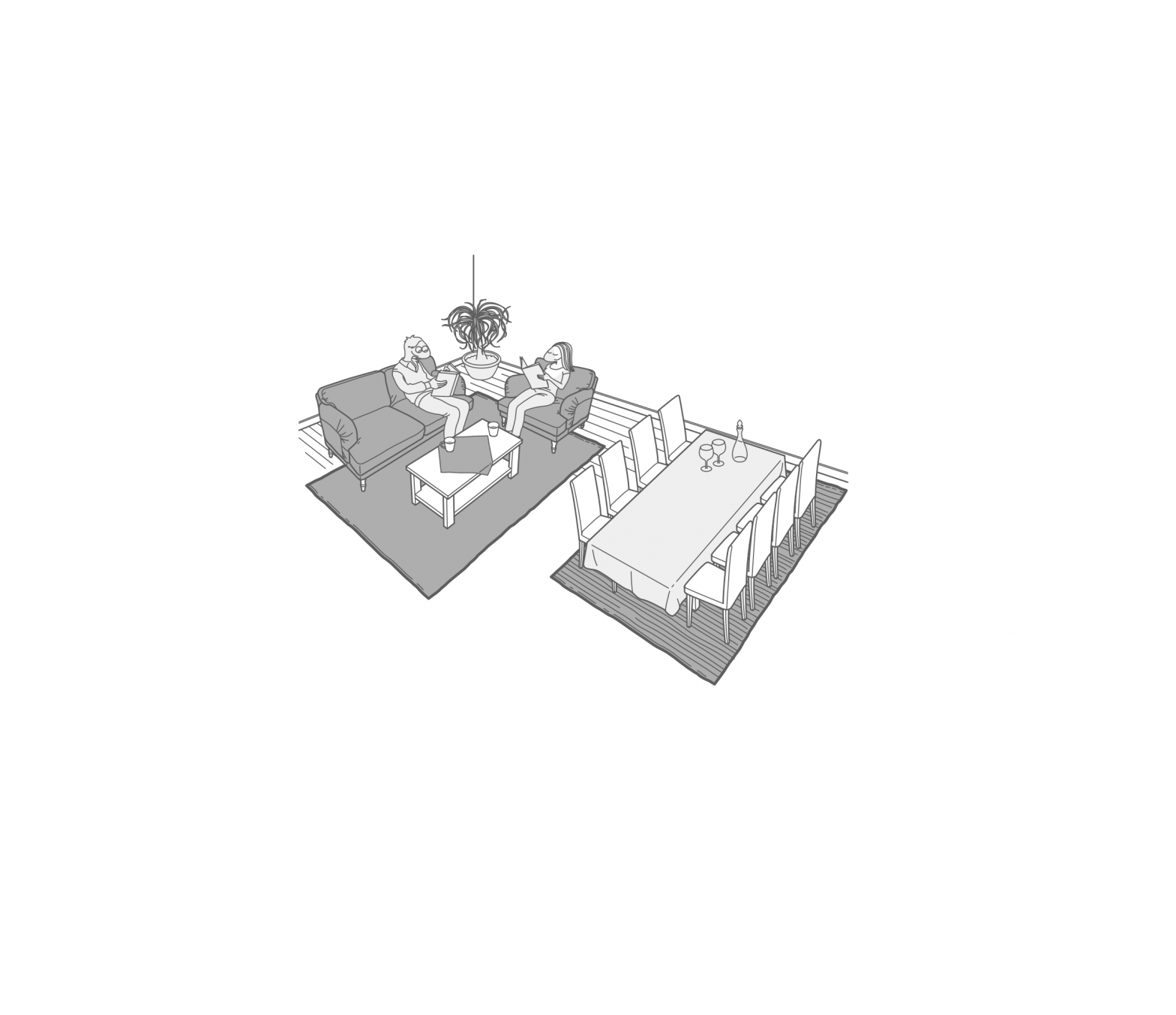IKEA Right Size Of Rug

Choosing the right rug size can feel like a challenge.Here are some tips to make the choice easier and advice to help you keep the rug fresh longer.
This is a reference guide created to better assist customers when purchasing products. While a high level of accuracy has been sought in its preparation, we cannot guarantee that there are no errors or omissions nor will we be bound by them. Availability may vary by store and prices are subject to change. Please see an IKEA co-worker or visit www.IKEA.ca for more information.
How to choose the right size of your rug
Cozy and hard-wearing
In the living room, you can really go all out when decorating with rugs. The rugs should create a feeling you like, of course, but it’s also important that they can stand up to wear and tear, day in and day out — and might even get a stain or two.
The advantage of a large rug (about 200×300 cm) that has room for a whole seating group, is that it gives a well-composed and cozy impression. Another possibility is a medium-size rug (about 170×240 cm), on top of which you can put the front edges of the sofa and armchairs.
One way to choose a rug is to look for one that goes well with your sofa. Consider colour and style, but also whether you want to have the sofa standing on the rug or not.
2-seat sofa

3-seat sofa

2-seat sofa and 3-seat with chaise lounge

2+3 corner sofa

A rug that goes with foodFlat-woven rugs that are easy to keep clean are most practical both in the kitchen and around the dining area. Many are also reversible, so you can relax and enjoy both sides. Another reason to choose a flatwoven rug for under the dining table is that it’s easier to move the chairs back and forth than it would be on a rug with a pile.
For a dining area, choose a rug that’s big enough for the chairs, even when they’re pushed out from the table. If you want a pile rug for the dining area, nevertheless, choose one with short pile. Neither dirt nor chair legs will be caught as easily as they would with long pile.
4–seat dining table

6–seat dining table

8–seat dining table

How to take care of your rug
Vacuuming
Vacuuming a rug is often enough to keep it clean, and it should be vacuumed as often as possible; preferably at least once a week. This will keep it nice and clean, and prevent dust and dirt particles from penetrating and damaging the fibres (which can make them dull after a while). It is a good idea to vacuum under the rug every now and then, as well, since a lot of dirt can fall through the pile or weave.
Tip: It’s generally recommended that you should only wash a rug (if that is an option) when the dirt can’t be removed by vacuuming.

Rotating periodicallyIf a rug is placed in a fairly heavy-traffic area, it’s usually a good idea to rotate it regularly (and turn it over if it’s reversible). This minimizes both the wear and tear, and the risk of fading from direct sunlight. It’ll also ensure that the rug will wear evenly and last longer. If your sofas, tables or chairs leave imprints on your rug, you can easily remove them with water and a soft brush.
Note: When moving the rug, try not to pull on the stitched edging. The stitching is only wrapped thread and can resist horizontal pull only up to a certain extent.
Caring for Oriental rugsA Persian rug is durable and easy to care for. It can look beautiful for years in a dining room or living room with just regular vacuuming. As with other rugs, it’s important to vacuum both on top as well as under the rug. A lot of dirt falls through the pile or weave, and the back of the rug is made of wool or cotton exclusively. If small stones are under the carpet, and if we walk on them frequently, it can damage the fibers or knots.
As with all rugs, if a Persian rug becomes very dirty or needs to be repaired, we recommend that you use a professional rug cleaner. Special equipment is needed to clean this type of rug properly, to not damage the rug.

© Inter IKEA Systems B.V. (June 18, 2021) Canada FY22
References
[xyz-ips snippet=”download-snippet”]

